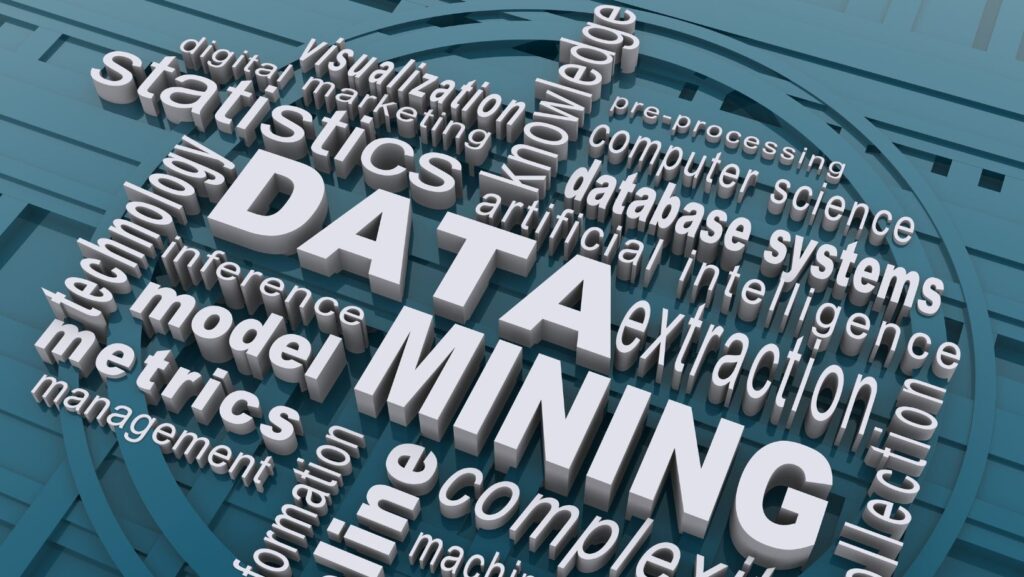In 2025, the global data sphere is projected to surpass 175 zettabytes—a number so vast it resists comprehension. This is not merely growth; it is acceleration without pause. In a year, IoT devices will produce over 90 zettabytes, feeding systems that never sleep, wait, or stop demanding answers. Working under these new pressures, GroupBWT recognizes that data mining now defines competitive advantage and operational survival.
And yet, volume is only part of the problem. Nearly half of the world’s data will sit inside public clouds, reshaping the infrastructure concept. Meanwhile, 30% of global data will require real-time processing, forcing decisions to occur at the point of origin—on the edge—before the rest of the system has time to notice.
This is not a future of passive storage or delayed reporting. It is a future that insists on immediate clarity, precision at scale, and systems that correct themselves midstream. Data mining services, therefore, define business survival.
What was once backend maintenance has shifted into strategic necessity. Signals arrive without warning, threats emerge without precedent, and opportunities pass without pause. The question is no longer how much data exists but how much of it matters, how quickly it can be refined into tactical data points, and how long the infrastructure can withstand the pressure of its growth.
From this point forward, the organizations that endure will have rebuilt their foundations to extract not just insight, but foresight, and to do so without hesitation, delay, or error.
How is AI Reshaping the Core of Data Mining?
AI didn’t replace reflection in data mining — it expanded it. We no longer just analyze what happened; we anticipate what’s coming and understand why it matters. Where data mining once explained the past, it now helps predict the future and highlights what deserves our focus.
Machine learning frameworks sweep across datasets, identifying the correlations that elude human review. They assign weight to risk, assess market fluctuations, and forecast demand before scarcity becomes visible.
Meanwhile, prescriptive engines complete the loop. Once a system anticipates disruption, it offers the next step. Prices adjust midstream, inventories reroute without instruction, and financial models recalibrate before exposure takes root.
This is no longer an extended analysis. It is preemption.
What Role Does Edge Computing Play in Real-time Mining?
Distance slows response—centralization stalls resolution. So, systems moved closer to the source.
Edge processing discards latency. Autonomous fleets interpret environmental inputs on the move. Industrial machinery corrects itself mid-operation. Energy grids shift loads before blackouts cascade.
Here, decisions happen at the moment of occurrence. Data is processed where it is produced, refining signals before they leave the origin. Therefore, intelligence remains immediate—there are no relays or lag.
Are Silos Still a Problem?
Yes, but they are harder to see now. Distributed systems blur their borders, and data sprawls across platforms, formats, and departments without pause.
Data fabrics have emerged as the quiet resolution. These architectures thread together disparate inputs into unified systems that reconcile structure without demanding centralization.
Semantic frameworks identify overlaps. Automated cataloging ensures that metadata carries its own history. What was previously fractured becomes coherent. Teams stop searching for what they already have and begin applying it where it counts.
And with that shift, speed returns.
How Does Privacy Survive Within High-velocity Mining?
Poorly, if neglected. But technology has adapted, discreetly.
Homomorphic encryption ensures that sensitive data is analyzed without exposure. Computation happens without decryption. Federated learning distributes training across nodes without moving the underlying information.

Healthcare collaboratives study disease progression across borders without violating regulation. Financial institutions share patterns without revealing the identities that created them. Privacy, therefore, exists in motion—not as a wall, but as a filter.
And the filter works quietly, preserving both insight and safety.
Can Data Mining Function Without Data Scientists?
Increasingly, yes — but only with the proper setup.
Low-code tools and natural language interfaces put data mining into the hands of people who understand the problem better than the technical infrastructure. Customer service teams can spot churn risks while talking to a client. Retail managers tweak promotions before sales dip. Analysts build reports without writing a single line of code.
This isn’t about making everyone a data expert. It’s about shifting control to those on the front line. The system handles the complexity, and the operator decides what they want to achieve.
Why has Specialization Become Unavoidable?
Because general solutions fail in specific conditions.
In healthcare, mining predicts patient deterioration hours before visible symptoms. Urban infrastructure rebalances traffic flow without human oversight. In finance, exposure is recalculated before losses deepen.
Sector-specific datasets demand sector-specific intelligence. Mining evolves, adapting to the pressures and regulations that define the environments in which it operates. There is no universal template. Only use cases. And they are multiplying.
Is Quantum Data Mining Real, or Still Theory?
It is early. But it is happening.
Experimental quantum processors have already compressed what were once weeklong optimization problems into outputs that arrive faster than they can be applied. Risk analysis, logistics routing, and resource distribution shrink into near-instantaneous operations.
The barrier is no longer computation; it is interpretation. Answers will arrive before the question is finished being asked. Whether organizations are prepared to use them remains a separate issue.

Perhaps the final question isn’t whether systems can answer faster than we ask but whether the right questions are still being asked.
FAQ
How are predictive and prescriptive analytics shaping business decisions in 2025?
By turning reaction into prevention. Predictive models detect the first signs of risk—before risk has a name. Prescriptive systems act, adjusting prices, rerouting supply chains, and shifting resources without pause. It’s not about faster decisions. It’s about decisions that happen before the question finishes forming.
How do data fabrics resolve fragmented systems?
Scattered data costs time. Data fabrics repair the split by connecting systems, sources, and records into a unified flow. A data mining expert builds the structure, ensuring information moves freely while keeping context intact. Instead of chasing missing files, teams work with complete, current datasets, no matter where they started.
Why is edge analytics critical for real-time operations?
Because delay destroys outcomes, edge systems process data where it’s made—on the floor, in the field, and inside the device. The outsource data mining services may handle oversight, but the first corrections will happen immediately. Latency disappears. Decisions occur as the event unfolds, not after it ends.
What challenges do organizations face when expanding access to analytics?
More access means more noise. Without clear rules, reports conflict, numbers drift, and trust erodes. Success depends on governance—strong guardrails, clear provenance, and shared understanding. Without these, insights collapse under their weight and are forgotten as soon as they’re found.
How does AI provide an advantage without creating new risks?
By staying questioned. AI reveals patterns, but not all patterns are worth following. The data mining company that leads is the one that audits its outputs, challenges its models, and refines its predictions until only the useful survive. Blind trust in automation builds blind spots. Scrutiny keeps them from spreading.



